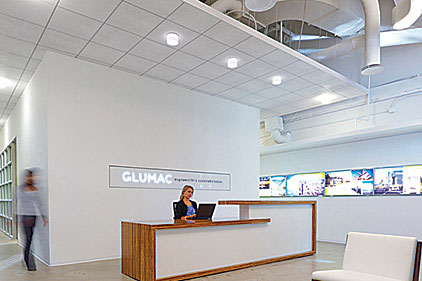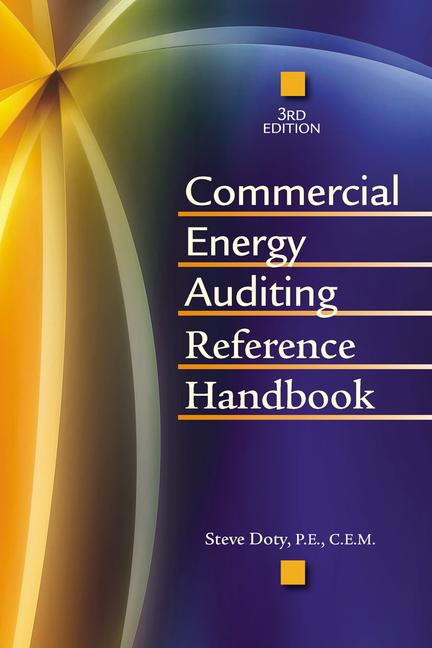
|
| By employing monitoring meters, MEP firm Glumac was able to successfully prove that its new office space in California reduced energy usage far below state requirements. |
When MEP engineering firm Glumac set up a new office space on the ground floor of an existing high-rise in Irvine, CA, the company had an ambitious goal even before the move-in — to certify the new 8,762-sq-ft space Platinum under LEED for Commercial Interiors (CI).
Glumac electrical engineer Jennifer Berg, P.E., worked with Glumac’s lighting design studio to implement a lighting system that would make effective use of the wide-open floor plan and large concrete columns rising 21 ft to the top of an urban loft-like structure. The task lighting system is integrated with the furnishings to provide 50-ft-candle illumination at the work surface.
Berg placed a priority on achieving significant savings over the California State Energy Code’s Title 24 allowance for lighting energy. With this emphasis on actual performance, she knew that Glumac would need to monitor the system’s power usage at different locations and in real time.
Berg was familiar with E-Mon from other projects and decided that using the meters at Glumac would be a good opportunity to see first-hand just how their data acquisition capabilities would pan out for Glumac’s unique needs. She contacted E-Mon’s local factory rep, Corey Bishop of Blanchard Associates, who coordinated the installation of three Class 3000 advanced kWh/kW meters.
Designed to install in new or retrofit applications, E-Mon D-Mon revenue-grade meters gather energy consumption and demand data for tenant billing, cost allocation, load analysis and control, equipment diagnostics, and other useful functions of value to the facility’s energy savings and cost-cutting initiatives.
All three meters installed at Glumac were configured as 120/208-240V three-phase wye; two were rated for 200A and the third at 100A. The meters track consumption patterns for up to 24 circuits.
Based on the electrical drawings provided by Berg, Bishop asked for a few alterations in the way the electrical panels were populated with circuit breakers in order to more efficiently consolidate the loads that Glumac wanted to monitor. This also enabled the most effective implementation of the metering system design. During the installation phase, the E-Mon meter’s built-in self-diagnostic capability identified a reverse-installed current transformer (CT) that was easily corrected.
Thinking inside the building
California’s “Energy Efficiency Standards for Residential and Nonresidential Buildings,” also known as Title 24 of the California Code of Regulations (CCR), was implemented in 1978 in response to legislation mandating reductions in the state’s energy consumption. These standards, including the California Energy Code, are periodically updated to accommodate new energy-efficiency technologies and methods.
Mindful of the need to accurately track and document energy usage patterns through careful monitoring of critical circuits, Glumac soon realized that its lighting system was consuming electricity at a level far below the California Energy Code allotment. Glumac engineers were able to characterize performance values to an exacting degree because the lighting and receptacle power usage are submetered separately, which allows Glumac to monitor and track power consumption over time in order to monitor performance and to troubleshoot any potential problems with the office systems.
According to electrical engineer Nimitch Payongsith, Glumac’s entire office space was allowed 9,828W of lighting per Title 24. He noted that Title 24’s W/sq-ft allotment varies according to the particular type of space being illuminated, ranging, for example, from as high as 1.4W in the conference room to as low as 0.6W in the storage room.
“From a design perspective,” said Payongsith, “our actual measured usage was much lower per square foot based on our E-Mon D-Mon meter readings.”
Berg also pointed out that the meters are successfully tracking lighting and power loads so that the company is able to monitor energy uses.
“The data ended up showing that our lighting was far exceeding our expectations for reduced energy consumption,” she said. “On paper we were at 0.6W per square foot, and in actuality we are at 0.2W per square foot — that’s 70% better than Title 24.”
A few weeks after going operational, Glumac’s Irvine office was recognized by Southern California Edison as the nation’s first completed “Office of the Future” pilot project. The project falls under the New Buildings Institute-managed North American Office of the Future (OTF) Consortium. OTF is a new multi-utility energy efficiency program that supports development and deployment of improved technical approaches to lighting and plug load controls, HVAC performance and metering in tenant improvement projects in commercial office spaces.
Additionally, in 2011, Glumac’s office in Irvine was a CoreNet REmmy Award winner for innovative Southern California building design.






